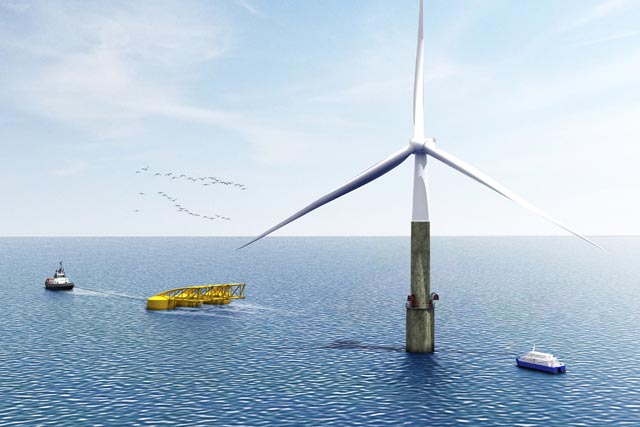PowerPulse
A team of EU-backed researchers have developed a 'self-installing' offshore wind turbine system designed to drive down installation costs and improve worker safety. The innovative system was developed as part of the EU's $3.6 million ELISA project and has seen a fully operational 5 MW prototype constructed in the Canary Islands. The team of researchers claim the system is the first bottom-fixed offshore wind turbine completely installed without the need for heavy-lift vessels.

According to the research team, the system was developed to tackle the high costs of installing turbines, which is seen as one of the main barriers to widespread roll-out of offshore wind farms.
"The ELISA technology is a pioneer in the development of completely self-installing offshore turbines," said research project engineer Jos Serna. "The entire system is completely pre-assembled and pre-commissioned in controlled harbor conditions, enhancing the possibilities for industrialization and minimising risks related to offshore assembly work."
The prototype uses a gravity-based foundation which serves as a floating platform from which a telescoping tower complete with wind turbine is anchored. Each unit – including the platform, tower and turbine – is completely assembled onshore and then towed to its designated site using a conventional tugboat, where the platform is secured and the tower raised.
"It`s important to note that currently there are only three or four heavy-lift vessels in Europe capable of installing an 8 MW turbine in waters deeper than 40 meters - and Europe leads the way in comparison to other developed markets," explained Serna, who said the system could be a key EU export to the fledgling US and Japanese offshore wind markets.
According to Serna, the ELISA system could allow for "drastic" reductions in the costs of offshore wind energy installation by as much as 30 to 40 per cent compared to traditional installation processes, while also saving ion maintenance and upkeep.
"As a matter of fact, the cost per MW of the prototype being developed is already below current market prices, despite all the investment required in auxiliary infrastructure and means whose complete costs have been dedicated to a single unit," said Serna.
